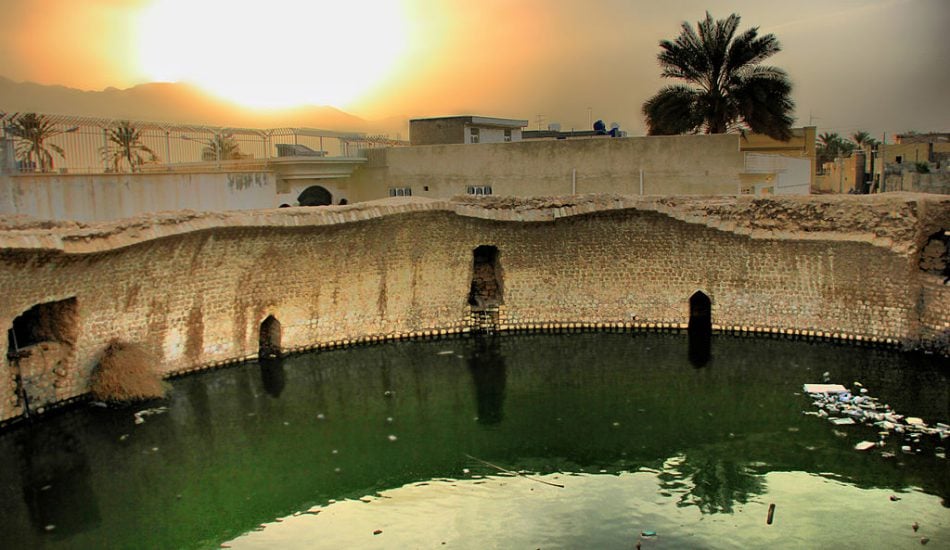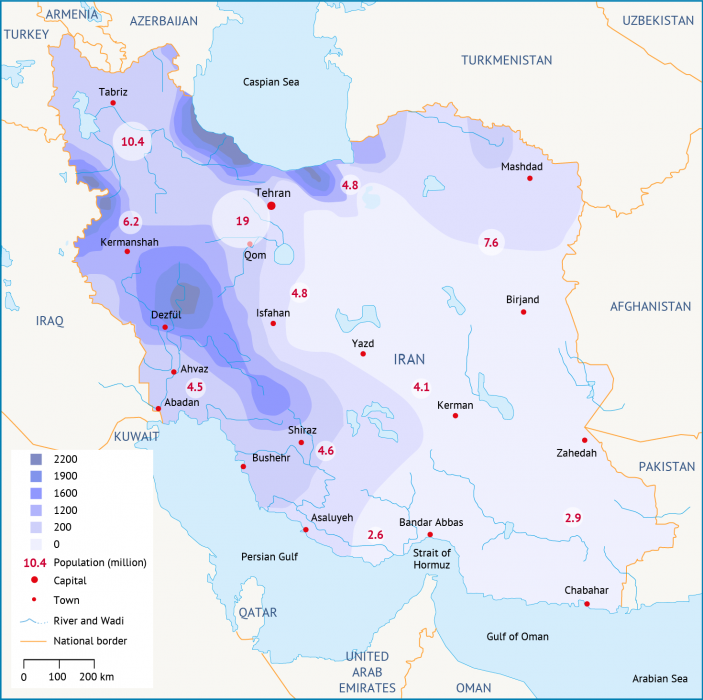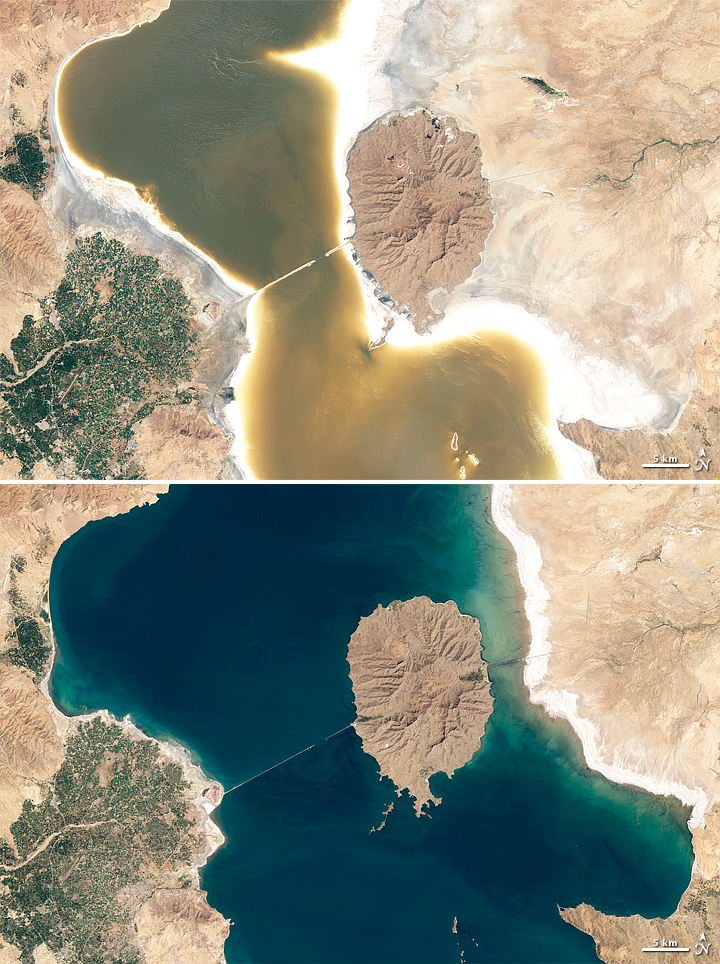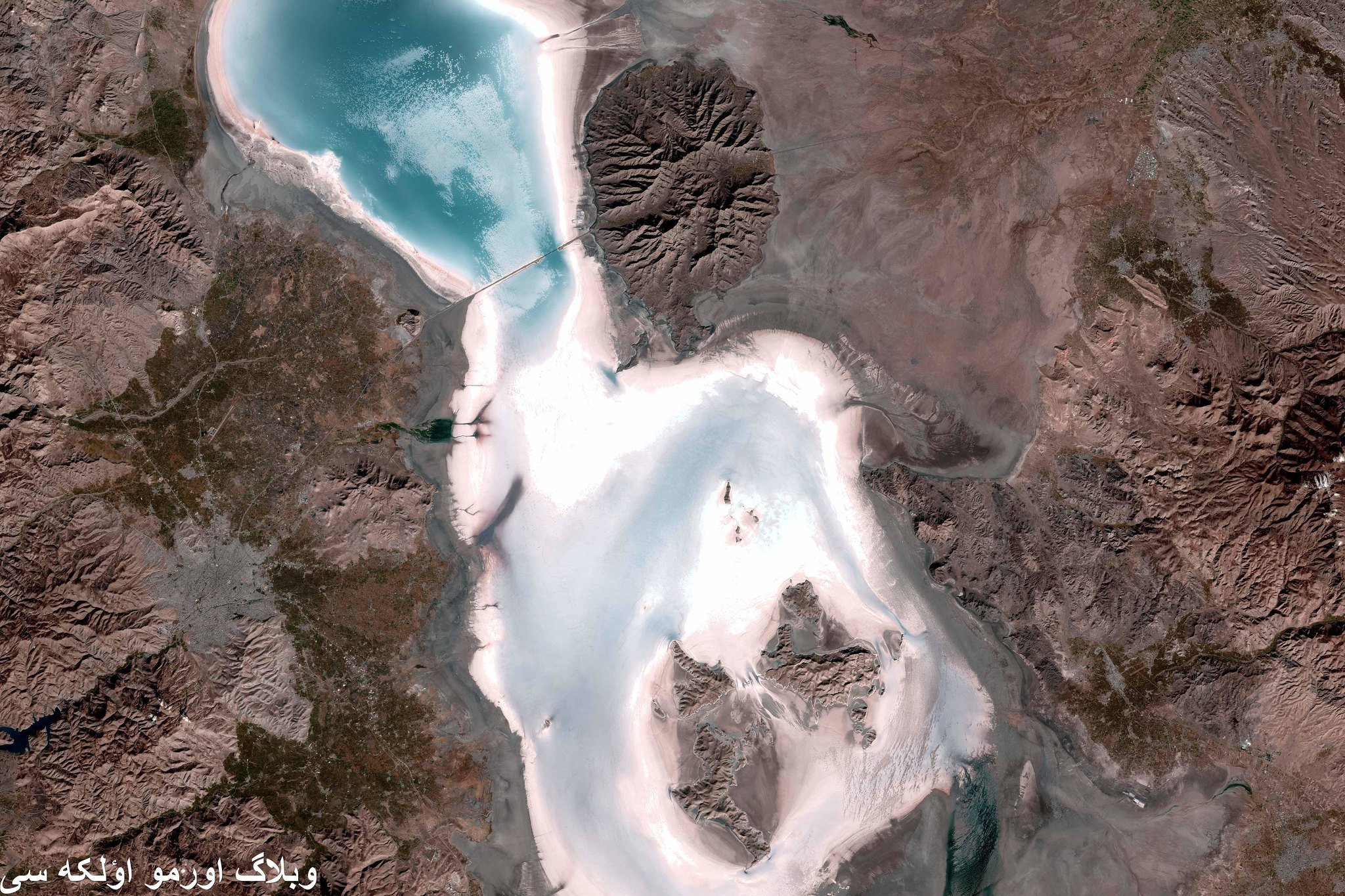
Water supply and food security will pose a major challenge in the coming years. Both the country’s natural climatic situation and the government policies in managing its limited water resources over the past few decades have exacerbated this challenge.
Factors arising from the natural climate
In the last 50 years, Iran has faced severe and prolonged droughts, which have significantly threatened water availability in all sectors. It is expected that climate change will further increase the risk of droughts in some parts of the country and cause floods in others. The largest flood in Iran’s recent history occurred in April 2016, when the Karun River in the south-west province of Khouzestan burst its banks.[1]
Iran is located in the world’s dry belt, with annual precipitation of 228mm in 2017.[2] This value has been the average since 1994, being 6% less than the long term average, which is 242 mm/year. A similar decline occurred to the average surface run-off as 52 billion cubic meters and 42% less than the long-term average.[3] The distribution of the precipitation is uneven across the country. The least precipitation falls in the most densely populated areas (Map 1).
Moreover, river discharges have notably decreased throughout the past 20 years with 53 billion cubic meters from 2005 to 2013, 42% less than the 89 billion cubic meters long-term discharge of rivers in Iran.[4]

Map 1. Precipitation distribution (in mm) across Iran’s 31 provinces. Numbers indicate selected populations in millions of people, (Source: Niloofar Sadeghi ).
Factors arising from managerial policies
Since the 1980s and the introduction of the government’s policy to become self-sufficient in wheat production, significant state investments have gone towards damming major rivers and expanding the area of cultivated land. As a result, many large-scale irrigated-farming schemes have been developed and dams built over major river systems. In 2004, Iran announced that for the first time since the Islamic revolution of 1979, it had become self-sufficient in wheat production.[5]
Although this policy brought greater political stability, it had an irreversible impact on the sustainability of the country’s renewable water resources that persist to this day.
The most important consequence of this policy was overexploitation of both surface and groundwater resources to increase the land under cultivation. Often the water was diverted from rivers without taking into consideration the minimum environmental need. This diverted water was offered at a low price to farmers in return for a small portion of the sales of their agriculture products.
Moreover, the diversion of river flows and drying wetlands resulting from dams construction by Iran and its neighbours, such as Turkey’s GAP project, are main causes for the increasing dust storms in Iran.[6]
The government also provided subsided fertilizers and pesticides to improve crop yields, causing widespread soil and water pollution. Moreover, the number of licenses issued for digging wells increased immensely, resulting in overexploitation of groundwater resources for agricultural purposes and making agriculture highly dependent on groundwater. To date, farmers continue to dig illegal wells, which account for 40% of all the wells in the country.[7]
Having said that, the main challenges can be summarized as follows:
i) Low agricultural water efficiency
Iran’s greatest water challenge is low efficiency by the biggest consumer, agriculture. Agriculture accounts for only 9% of GDP but consumes over 90% of the country’s water.[8] [9] The cropping pattern is mostly composed of crops with high water consumption rates, and the most common irrigation method is canal irrigation, which has high evaporation and high seepage losses. The use of chemicals (fertilizers and pesticides) pollutes both the soil and water, making it difficult to reuse agriculture wastewater in other sectors and posing environmental and health threats. The low agricultural water fee contributes to careless use of water by farmers and high water losses. The agricultural sector creates 19.2% of the national employment [10], which highlights the complexity of implementing any short-term plan to cut water allocation to this sector.
The case of Lake Urmia exemplifies all these challenges. Over-damming of feeding rivers to the lake, diversion of the lake’s water to agriculture, low irrigation efficiencies and high dependency of farmers living off agriculture coupled with recent droughts have all contributed to severe shrinkage of the lake to less than half its size in the 1970s. This abnormal shrinkage has significantly affected the regional economy, its air quality, agriculture and, more importantly, the quality of people’s lives.
ii) Drop of groundwater table and land subsidence
Iran has about 650 thousand wells (legal or illegal), 39000 qanats and 146000 springs.[11] Groundwater levels are dropping at an average of 2-4 metres per year, since the slow-filling aquifers have not been able to keep up with the growing number of water users and withdrawals.

Photo 2: Images of Lake Urmia on March, 2014 (top), August 13, 2011 (middle), and August 25, 1998 (bottom), (Source: NASA’s Earth Observatory, Flickr; urmiyephoto, Flickr).
This exceeds the national average long-term drop in the groundwater table of 0.5 m/year considerably.[12] This drop has caused unprecedented land subsidence of 2-30cm in different plains across the country and sinkhole formation. All of these factors also contribute to massive desertification.
To restore this tremendous loss in the renewable capacity of aquifers, a holistic demand management scheme should be implemented to lower consumption by 11-12BCM per year. The government restricted withdrawal and wells construction in 210 plains with 300 aquifers to accelerate aquifers’ recovery.[z,m] The total area of restricted aquifers is about 15,485 km2, which suffer from over 4700 MCM/year over-abstraction rates.
However, the agricultural sector remains to use increasing groundwater, which leaves the feasibility of these restrictions uncertain. [13] [14] Most of the overexploitation occurs in the central basins where less surface water is available. Given the sustainability of the ancient qanats system to extract groundwater, the potential importance of qanats in helping to solve Iran’s water security challenges is unquestionable. Qanats convey water underground, which reduces evaporation, and only depend on natural gravity, rather than external sources of energy, for water transmission.
iii) Pollution of water due to agro-chemicals
Pesticides and fertilizers are subsidized by the government, and are therefore used extensively in agriculture. Irrigation water washes these chemicals into groundwater aquifers and agricultural run-off. Agricultural wastewaters are thus highly contaminated with these agro-chemicals that often contain heavy metals. Moreover, traces of nitrates are found in many urban sewage systems as well as in industrial effluents. This pollution makes wastewater reuse controversial, due to its potential threats to the environment and human health.
iv) Insufficient community participation in addressing water problems
With the collapse of Iran’s traditional and sustainable water management systems, many local communities have lost the sense of ownership and responsibility towards the conservation and management of water resources they once had. This is evidenced by the careless use of water by farmers and the low water-use efficiency in the agricultural sector. However, the situation in most of the large cities, including Tehran, Isfahan and Mashhad, is different. Here, the general awareness level is high, and the public demonstrates a willingness to engage in improving water-use efficiency.
v) Unreliable water data
The first step in any successful water management plan is to have reliable water data. In Iran, groundwater-related data (wells and springs) are collected every five years through field visits and data series analysis. The water levels in rivers are monitored on a daily basis and measured twice per month. However, the monitoring equipment, such as installed gauges and counters, is not sufficient. Furthermore, due to sanctions, data from other sources, such as satellite images, are not available as a means to compare and verify ground data. In this regard, the data provided by various government offices often differ significantly, which inhibits a united response to water resources by the concerned authorities.
vi) Rushed solutions
In pursuit of water security, the government considers alternative solutions to the rising water demand. One of the alternatives that is often referred to by government authorities is inter-basin water transfer, whereby water is imported from river basins outside the country, such as Tajikistan, or desalinated seawater is transferred from the Persian Gulf or the Caspian Sea. Although these schemes may provide a temporary remedy, in the long term they might add to the social and environmental complications. At the same time, such rushed solutions do not address the inefficient use of water. By improving water-use efficiency, particularly in agriculture, the water saved can be largely used in place of the transferred water introduced by these solutions.
Reducing Water Use
The government has attached high importance to demand management. Nationwide programs are being implemented to raise public awareness about the growing water scarcity and to engage the public in water-saving measures. These programs include capacity building through mass media (state TV and radio), training initiatives in schools, installing public boards in cities and metro lines in cooperation with municipalities, developing mobile applications, frequent interviews with water officials and educating journalists on the new concept of water journalism.
Economic incentives, such as low-interest loans, are being provided to farmers to install modern irrigation systems, like drip irrigation or sprinkle irrigation, which have better water-use efficiency. New agricultural practices that consume much less water, such as hydroponics, are also being used for large-scale greenhouse production in some cities, including Tehran, Hashtgerd, Karaj and Kish Island. In recent years, with the help of different UN agencies, sustainable agricultural practices have been introduced in various river basins, including the Lake Urmia basin, which have improved water use. Small-scale initiatives are being implemented in some areas, with the aim of matching cropping patterns with available water. However, one of the biggest challenges that remains unsolved is the lack of proper groundwater monitoring, especially insufficient counters to monitor extractions from illegal wells for agricultural use.
Reducing the water demand in urban areas requires a more consolidated effort to repair leakage and seepage along conveyance lines, standardize water taps, separate drinking water from non-drinking water uses, and collect run-off using urban water harvesting techniques. During the drought of 2001-2004, the government adopted a new pricing model that incorporated a consumption ceiling. Any consumption above this ceiling resulted in escalating fees per volume of additional consumption. This model is still in place. During the same drought period, rationing of drinking water and restricted supply were introduced in all major cities, including the capital Tehran.
[1] Deputy Minister of Energy, 14 April 2016. Press release. Available at alef.ir/vdcc1pq1o2bq0s8.ala2.html?345139.
[2] FAO, 2017. AQUASTAT Database. AQUASTAT Website. Available at http://www.fao.org/aquastat/statistics/query/index.html
[3] Moridi, A., 2017. State of water resources in Iran. International Journal of Hydrology. Available at https://water.fanack.com/
[4] Ibid.
[5] Iran Times. Available at www.iran-times.com/islamic-republic-is-again-self-sufficient-in-wheat/.
[6] Moridi, A., 2017. State of water resources in Iran. International Journal of Hydrology. Available at https://water.fanack.com/
[7] BK, 2015. ‘One well per every 104 Iranians’, Deutsche Welle, Farsi service.
[8] FAO, 2017. AQUASTAT Database. AQUASTAT Website. Available at http://www.fao.org/aquastat/statistics/query/index.html
[9] Moridi, A., 2017. State of water resources in Iran. International Journal of Hydrology. Available at https://water.fanack.com/
[10] Statistical Centre of Iran, 2015.
[11] Moridi, A., 2017. State of water resources in Iran. International Journal of Hydrology. Available at https://water.fanack.com/
[12] Zekri, S. ed., 2020. Water Policies in MENA Countries (Vol. 23). Springer Nature. Available at https://doi.org/10.1007/978-3-030-29274-4
[13] Moridi, A., 2017. State of water resources in Iran. International Journal of Hydrology. Available at https://water.fanack.com/
[14] Zekri, S. ed., 2020. Water Policies in MENA Countries (Vol. 23). Springer Nature. Available at https://doi.org/10.1007/978-3-030-29274-4

